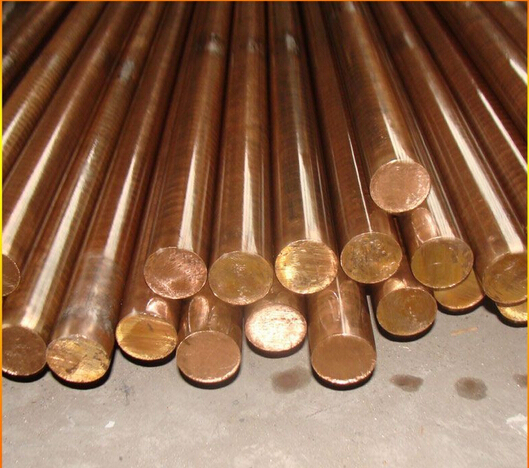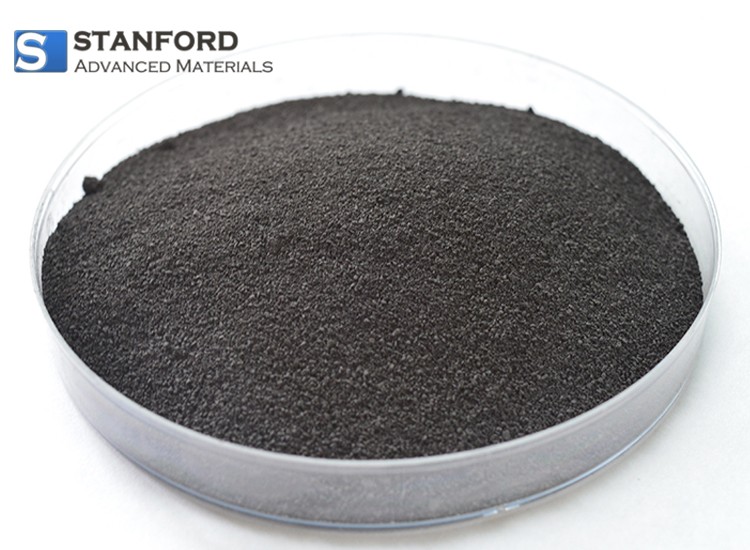Beryllium: A Rising Star On The High-tech Stage
Beryllium is a rare, steel‐grey metal. It occupies the fourth position in the periodic table and is the lightest alkaline earth element. In 1798, the French chemist Vauquelin determined by analysis that the minerals Beryll and Emerald, despite their differing appearances, have almost identical chemical compositions. In addition to the known elements Aluminium, Silicon and oxygen, a previously unknown element was identified. Vauquelin named this new element Glucinium, derived from the Greek word Glykys, which means “sweet”.
Beryllium Bronze
An important application of beryllium metal is in the production of alloys. Bronze is generally softer than steel, less ductile and exhibits a lower corrosion resistance. However, when beryllium is added, its properties change substantially. Typically, an alloy with a beryllium content ranging from 1 % to 3.5 % is referred to as beryllium bronze. The mechanical properties of beryllium bronze exceed those of steel. Its hardness and elasticity are enhanced, its resistance to corrosion is improved and its electrical conductivity is maintained.
Beryllium bronze is used in a number of technical fields. For example, it is employed in the manufacture of deep-sea detectors and submarine cables. It is also utilised for the production of precision instruments, high-speed bearings, wear-resistant gears, welding electrodes and watch hairpins. In commercial aircraft, beryllium bronze is used to produce bearings that resist both corrosion and wear. These components can achieve a service life that is more than four times longer than comparable parts. Springs made from beryllium bronze have reportedly withstood several hundred million compression cycles.
Nickel-containing beryllium bronze has the property of not producing a spark when struck. Consequently, it is useful in industries such as oil extraction and explosives. Moreover, nickel-containing beryllium bronze is not magnetised by magnetic fields; it is therefore suitable for the manufacture of non-magnetic components.

An Advantageous Material for Aerospace Applications
It is well established that reducing the weight of a spacecraft lowers launch costs. Beryllium is a light metal with a considerably lower density than aluminium and greater strength than steel. Consequently, it is an important material for aerospace. A beryllium-aluminium alloy combines the properties of both elements. This alloy is used as a structural material in spacecraft, including artificial satellites, and in components such as the chassis, support column and rigid support structures.
The beryllium alloy is also used in aeroplane construction. It is incorporated in key components such as the vertical stabiliser and the wing box. Reports state that more than 1 000 parts in a modern large aircraft are manufactured from beryllium alloy.
Beryllium exhibits thermal properties that are suited to demanding applications. It has a high melting point, high specific heat, high thermal conductivity and a moderate rate of thermal expansion. For instance, beryllium is used in the manufacture of braking systems for supersonic aeroplanes because of its effective heat absorption and dissipation. Beryllium is employed in the production of heat shields for satellites and spacecraft to prevent excessive heating during atmospheric re-entry. In addition, beryllium metal is used in the fabrication of inertial navigation systems that contribute to improved navigational accuracy for rockets, aeroplanes, submarines and similar vehicles.

 Bars
Bars
 Beads & Spheres
Beads & Spheres
 Bolts & Nuts
Bolts & Nuts
 Crucibles
Crucibles
 Discs
Discs
 Fibers & Fabrics
Fibers & Fabrics
 Films
Films
 Flake
Flake
 Foams
Foams
 Foil
Foil
 Granules
Granules
 Honeycombs
Honeycombs
 Ink
Ink
 Laminate
Laminate
 Lumps
Lumps
 Meshes
Meshes
 Metallised Film
Metallised Film
 Plate
Plate
 Powders
Powders
 Rod
Rod
 Sheets
Sheets
 Single Crystals
Single Crystals
 Sputtering Target
Sputtering Target
 Tubes
Tubes
 Washer
Washer
 Wires
Wires
 Converters & Calculators
Converters & Calculators
 Write for Us
Write for Us

 Chin Trento
Chin Trento



